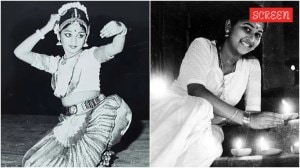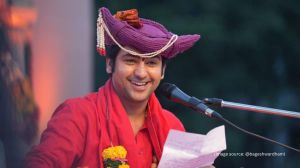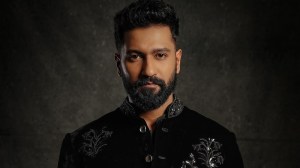The wizard VS The wall
It’s the cumulative effect of sponsorships, centuries and a surfeit of one-day cricket. Every promising cricketer today would rather be...

It’s the cumulative effect of sponsorships, centuries and a surfeit of one-day cricket. Every promising cricketer today would rather be like Tendulkar, hitting fours and sixes in a whirlwind of destruction, than Dravid, batting all day and wearing the opposition down. Glory over grit every time. But, as finds out, what’s good news for the marketing men could be bad news for Indian Test cricket: where will the next Headingley come from?
Two years ago, the Delhi and District Cricket Association (DDCA) conducted open trials to select the state under-15 team. Over 700 young boys in immaculate whites, carrying kit bags almost double their own bodyweight, attended the two-day session. They were asked, one by one, who their cricketing hero was. More than 90 per cent said, without batting an eyelid: ‘‘Sachin’’.
‘‘Ninety percent of the boys who come to my academy want to emulate Sachin’’, says former Indian batsman Gursharan Singh. ‘‘The main reasons, as I see it, are Sachin’s success at a very young age, and his attacking style. If he could do it at an early age, why can’t we, they ask, and anyway a majority of youngsters favour attack to defence.’’ The proportion would be the same, if not greater, across the country: almost every budding cricketer at every cricket academy or nursery models himself on Tendulkar. Test it out on your son, your nephew, any child who fancies himself with the bat.
There are obvious benefits from such a trend, including the walking, talking spin-off called Virender Sehwag. But the long-term effect on Indian cricket is less tangible, less obvious and ultimately less beneficial: if everyone plays the strokemaker and bats for all of one session of a Test match, who will play the sheet-anchor?
In short, if everyone is a Tendulkar (or a Sehwag), who will be the Dravid?
The importance of a Dravid in the Indian team has never been as emphatic as the Headingley Test. Sachin and Saurav hit blazing centuries, but they could do so only because Dravid had played his trademark foundation-building knock. His style is classical, a purist’s delight; now try explaining the beauty in that to an eight-year-old.
There were many at New Delhi’s Gyan Bharati Academy coaching camp. Ask Samarth Goel which batsman he likes the most and, before you can finish your question, comes his answer: ‘‘Sachin Tendulkar, sir.’’ Among the 40-odd trainees (all between 5 and 12 years old) only Mahavir Tokas didn’t want to be like Sachin, but like Saurav: only because he’s left-handed, like the Indian skipper.
|
Another Brick in The Wall Story continues below this ad Did we say everybody idolised the Little Master? Not Cheteswar Pujara. Anyone who’s been to the Railway Ground in Rajkot in the past few years will tell you about a father and son who are almost part of the fixtures there. Since the day Cheteshwar was strong enough to hold a bat his father, former Ranji Trophy player Bipin, has brought him to this ground for long and extensive nets. And not to indulge in flashy strokeplay either. Instead, his drill is to stay at the wicket the whole day, working his shots strictly according to the coaching manual. Just like his hero Dravid. That diligence seems to have paid off. At the age of 12, playing for Saurashtra in an under-14 match against Baroda, he scored 306. As impressive as the score itself is the manner in which the runs were accumulated: over almost two days, off 516 balls and including 36 boundaries. At the age of 12. Now 17, he’s represented Saurashtra in the under-16 and under-19 teams; last season, he scored 857 runs, and had 950 the season before that. — Sandeep Dwivedi |
There are, obviously, no takers for the Dravid school of batting at Mumbai’s Shivaji Park, the nursery of Indian cricket. Everyone wants to bat like the man who, as a boy not so long ago, set this place on fire. Is it mere coincidence that there hasn’t been a half-decent batsman out of Mumbai since Tendulkar?
At Pune’s Deccan Gymkhana, finally some boys who want to be Dravid. Here’s 12-year-old opener Salil Joglekar: ‘‘He’s so technically correct and shows that if you stay at the wicket runs will come.’’ And across town at the Salgaoncar Academy, Nandan Kamath (16) and Mihira Ahmed (18) prefer The Wall to the Little Master.
Dravid’s predecessor in the Indian team was probably Chetan Chauhan, who in his 40 Tests acted as the consummate foil to the brilliance of Gavaskar. He’s seen it all before, he says. ‘‘Soon after the 1983 World Cup triumph, one witnessed a glut of kids trying to emulate Kapil Dev. So many youngsters turned up at various coaching centres, wanting to become an all-rounder like the Haryana Hurricane.
‘‘It clearly shows that youngsters are more inclined to emulate super stars who are attractive to watch while batting, bowling or fielding. Admitted, a Rahul Dravid or a Saurav Ganguly may have proved as useful to the national team as Sachin. But Sachin’s fluency and explosive power are what attract the youngsters,’’ he says.
It’s not just that children are more easily impressed by Sachin’s slogging than by Dravid’s defending. Part of the reason is purely non-cricketing: Parents see greater potential (read: money) in someone who plays attacking, exciting cricket than in someone who appeals to more aesthetic senses.
Makarand Waingankar, a consultant to the Karnataka State Cricket Association (KSCA) blames the media and the parents for thrusting the Tendulkar hype on the kids. ‘‘Such is the influence that lighter bats have gone out of fashion. I have seen kids in the under-13 category using heavier bats without realising that long use of a heavy bat at such a tender age could lead to a chronic back problem.’’
The demand extends to the helmet and specially light pads that tendulkar wears, says Waingankar. ‘‘The parents are primarily responsible as they want their children to emulate Tendulkar. But what they don’t realise is that Tendulkar is a godsend gift. Though he idolised Vivian Richards, he also had the cricketing sense to reach the pinnacle.’’
And then there’s the old Test-versus-one-day debate. Whatever exposure a youngster gets to cricket nowadays is of the limited-overs variety. Not so long ago, schools and colleges would play two-, even three-day matches. That’s where batsmen learnt the basics — or at least the value of occupying the crease.
The famous Delhi University inter-college tournament would, in the 1960s and ’70s, culminate in a five-day final — usually between Hindu and St Stephens colleges — to crowds of 10,000 and with AIR providing running commentary. The format threw up a galaxy of stars, including Sunil Gavaskar, Ajit Wadekar, Dilip Vengsarkar, G R Viswanath, Kapil Dev.
But with schools, colleges and universities adopting one-day cricket in the face of a universal funds crunch, the opportunity to play a long innings has become a luxury. Not only has one-day cricket killed the art of flight, says Bishan Singh Bedi, it’s made batsmen forget the basics and resort to across-the-line shots. ‘‘Unless we go back to two and three-day games at the grassroots level, things will remain the same,’’ he argues.
‘‘They just don’t want to stay at the wicket. Most of them don’t even know how to play defensively,’’ says former Indian captain Dilip Vengsarkar, who deals regularly with teenagers at his Elf-Vengsarkar Cricket Academy (EVCA). Blaming the quick-cricket tendency Vengsarkar, who is also a talent research development officer (TRDO) with the BCCI, says it results in young playing having poor basics. ‘‘All great players have become great because they were strong in their basics. They should be playing the longer versions more because no coach can instill the kind of practical knowledge one gets while playing matches.’’ Kedar Joglekar, coach at the Deccan Gymkhana, agrees and also blames television. ‘‘They (young cricketers) all want to play across the line or improvise like Sachin. Basics are being forgotten.’’
The irony, says Chandigarh coach Sukhwinder Bawa, is that Dravid is a coach’s dream. ‘‘He is an ideal batsman. A batsman needs solid technique and temperament. When a player is too young, he can’t play attacking strokes like Sachin. Most of my trainees in the 12-17 age group try to pace their careers on the lines of Dravid,’’ he says.
So all hope isn’t lost, then. True, almost all kids want to play like Tendulkar. But if there’s just one Dravid wannabe in every crowd, it’s enough to keep the succession line ticking over.
| ‘I don’t have a machine to produce Sachin Tendulkars’ |
|
MADAN LAL (National selector)
(As told to S Santhanam) Story continues below this ad |
(With Jaideep Marar in Mumbai, Chandresh Narayan in Pune, Vikrant Gupta in Chandigarh)



- 01
- 02
- 03
- 04
- 05



























